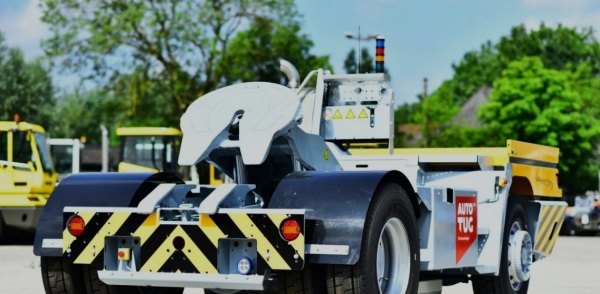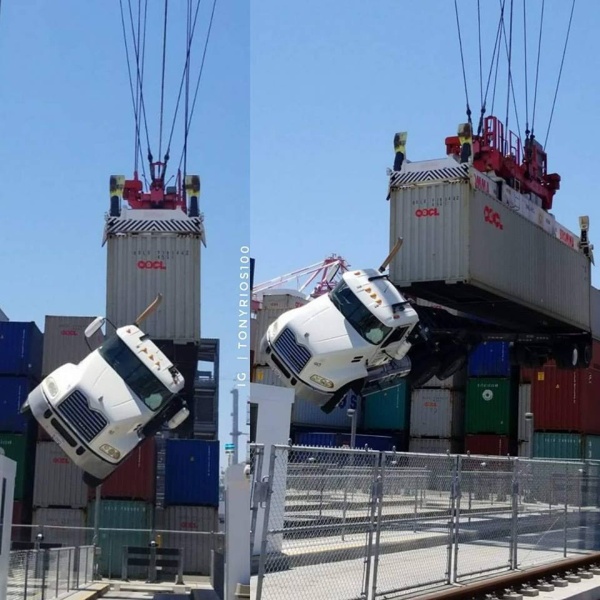Terberg automated terminal tractor, without cab. Photo credit: Portstrategy.com
A new labor contract prohibits fully automated port terminals, but allows negotiations to be conducted on the introduction of semiautomatic processes and new technologies.
The International Longshoremen's Association (ILA), the union representing stevedores on the East Coast and the US Gulf Coast. UU., Has successfully agreed to an extension / extension of the master contract with the US Maritime Alliance. UU (USMX- US Maritime Alliance) for six years, until September 2024.
The ILA has harshly criticized the automation throughout the negotiations, and the current provisions on "new technologies" in the current master contract have been replaced by a new language that, according to the ILA, offers "historical protections against the destruction of jobs in fully automated ports. "
ILA President Harold Daggett said: "This is a great day for the ILA and for our union members. Members of the ILA covered by this ILA / USMX Master Agreement can now look forward to a bright future where their salaries will increase and the threat of job loss caused by fully automated terminals, semi-automated terminals and automated equipment is eliminated. Our national health care plan, MILA, remains solid and our members will benefit from increases in the Container Royalty.
"This extension not only protects the benefits that ILA members already have, but it also improves these benefits to ensure that they are adequately compensated for all their hard work. I am particularly pleased with the jurisdictional protections that the ILA has negotiated to ensure that the ILA works are preserved in the coming years. I believe that this proposed extension represents a gigantic step forward in the history of collective (joint) negotiation of the ILA. "
As explained by the ILA, the new master contract defines "fully automated" as "machinery or equipment without human interaction". It is very likely that AGVs and automatic Straddle carriers comply with this definition, but an ASC with a remote operator clearly does not lack human interaction: the cranes are usually called "semi-automated" RMGs in the East Coast of the USA. UU
The new master contract does not prohibit semi-automation, but establishes a new process to negotiate its introduction and to protect jobs. The current Committee on new technologies and automation and the existing provisions on the new technologies implemented have been replaced by a new language.
"The management and the ILA agree that semi-automation and automation technology will not be implemented until both parties agree to the protection of the workforce and the desired levels of personnel," explained the executive vice president of the ILA, Dennis A. Daggett, to the members of the ILA.
He said both parties will negotiate staffing for the new equipment and the number of jobs affected, as well as the identification of "new work" created by the requirements of the technology and training. A process is provided to refer the disagreements to the subcommittees with defined work periods, before a final mediation led by the mediators and recognized arbitrators, George Cohen or JJ Pierson. And Dennis Daggett said the new process will deliver a final result "all the time."
It is important to note that the problems of automation and new technology will be decided on the basis of going case by case, port by port. Therefore, there are no rules at the national level on key issues, such as the number of cranes that a remote operator can control at any one point at the same time.
Photo by Ramón E. Navarre on Facebook. LBCT automation terminal. Photo published by Felixstowe Dockers.
No to fully automated equipment
Reading between the lines the few comments that were leaked and printed by the media during the negotiation process, including the Journal of Commerce, when the conversations were interrupted at times, what the ILA really wanted to avoid is the automation of the MVII terminal style. or the Rotterdam World Gateway (RWG), where there is only one
If you want to post this post on your own site, you can do it without problems,
as long as you do not modify it and cite as a source to https://gruasytransportes.wordpress.com
Remember to subscribe to our blog via RSS or Email.
Follow us on Twitter at @gruastransporte
Follow us at www.facebook.com/blogdegruasytransportes/
as long as you do not modify it and cite as a source to https://gruasytransportes.wordpress.com
Remember to subscribe to our blog via RSS or Email.
Follow us on Twitter at @gruastransporte
Follow us at www.facebook.com/blogdegruasytransportes/

